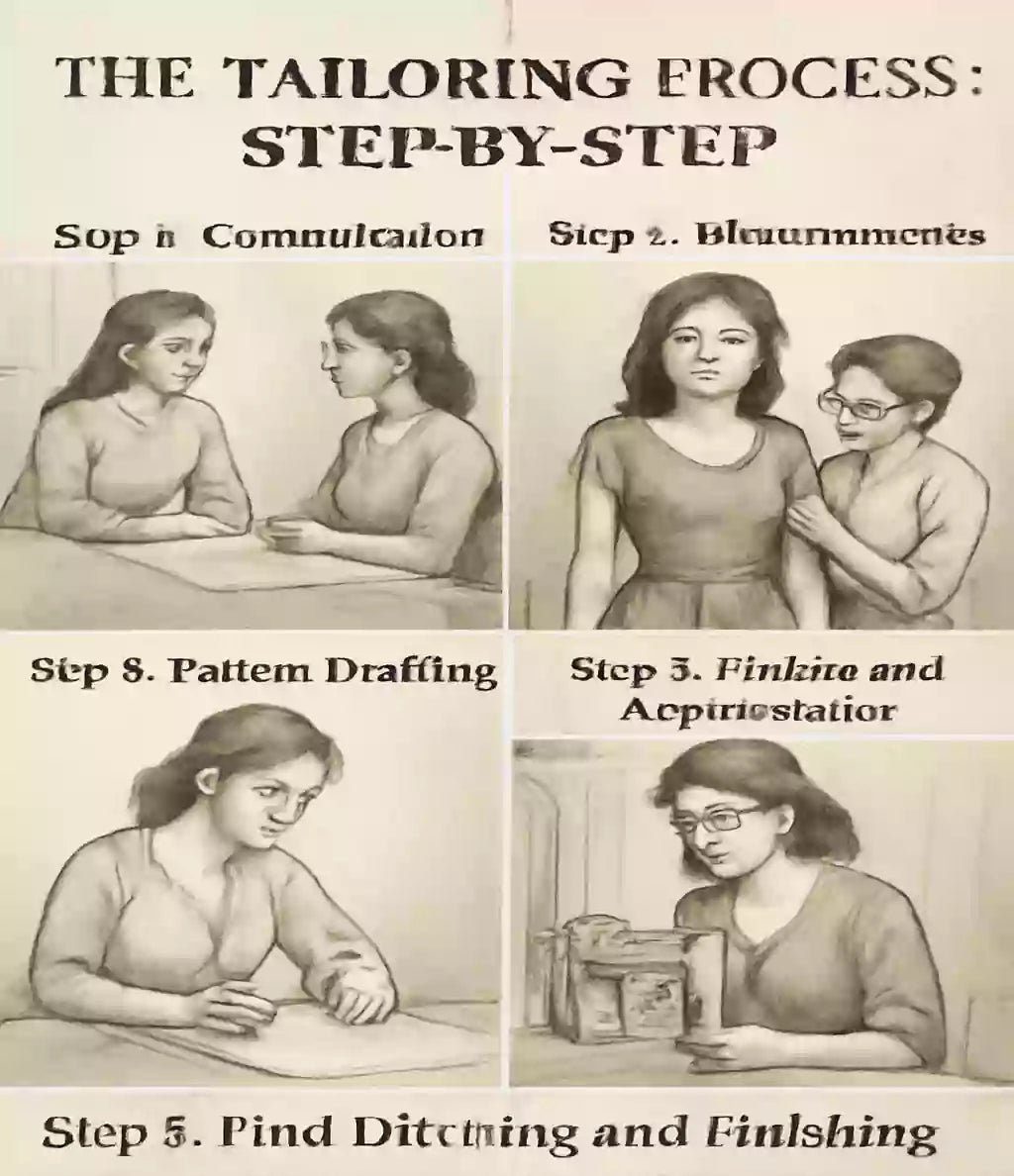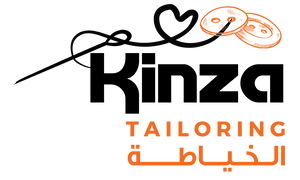The Complete Guide to Custom Tailoring for Women
The Complete Guide to Custom Tailoring for Women
Do you want to know about Custom tailoring for women? so you are in right place. In a world of fast fashion and ready-to-wear clothing, custom tailoring offers a refreshing return to craftsmanship, personal expression, and perfect fit. While many associate tailoring with men’s suits, women are increasingly turning to bespoke clothing to achieve timeless, flattering, and functional wardrobes. The Complete Guide to Custom Tailoring for Women will help you navigate everything from selecting fabrics to understanding body measurements, ensuring your tailored garments meet your style and practical needs.

Why Choose Custom Tailoring?
Before diving into the process, it's essential to understand the benefits of custom tailoring. Unlike off-the-rack garments that are designed for average proportions, tailored clothing especially when crafted by a skilled ladies tailor Abu Dhabi is made to your unique measurements and preferences. This means better fit, greater comfort, and a more flattering silhouette.
Here are some reasons why women are embracing custom tailoring:
-
Perfect Fit: Custom pieces are shaped to your exact dimensions, eliminating common fit issues like gaping buttons, tight shoulders, or overly long sleeves.
-
Personalized Style: You get full control over fabric, color, buttons, linings, and cuts.
-
Quality Over Quantity: Custom garments are usually constructed with better materials and attention to detail.
-
Sustainability: With longer wearability and less waste, tailored clothing can be an environmentally conscious choice.
-
Confidence Boost: There’s something empowering about wearing a piece that fits like a glove and reflects your individuality.
Getting Started with Custom Tailoring
The first step in The Complete Guide to Custom Tailoring for Women is to understand your wardrobe needs. Are you looking for workwear, formal outfits, casual pieces, or something else entirely? Identifying your goals helps guide the tailoring process.
1. Know Your Body Type
Your body shape plays a vital role in tailoring decisions. Whether you're pear-shaped, hourglass, apple-shaped, or athletic, tailoring can highlight your strengths and balance your proportions. A professional tailor can recommend silhouettes and cuts that work best for your frame.
2. Find the Right Tailor
Your experience depends greatly on the skills and understanding of your tailor. Ask for referrals, read reviews, and don’t hesitate to schedule a consultation before committing. A good tailor will ask questions about your lifestyle, fabric preferences, and how you like your clothes to fit.
Look for tailors who:
-
Have experience in women’s garments
-
Can show a portfolio or samples
-
Offer a fitting process (not just measurement-based sewing)
-
Understand the importance of both aesthetics and practicality

3. Choose the Right Fabric
Fabric selection is crucial to how your finished garment will look and feel. Cotton, silk, wool, linen, and blends each have their own benefits:
-
Cotton: Breathable and versatile; great for shirts and summer dresses
-
Wool: Durable and insulating; ideal for suits and structured pieces
-
Linen: Lightweight and airy; perfect for warm-weather wear
-
Silk: Elegant and smooth; excellent for eveningwear and blouses
-
Blends: Combine the best of multiple fabrics, often increasing durability or comfort
Ask your tailor about fabric weight, drape, texture, and maintenance requirements.
The Tailoring Process: Step-by-Step
Step 1: Consultation
This is where you discuss your vision. Bring references like photos, Pinterest boards, or even a favorite garment you’d like to replicate or modify. You’ll talk about fabrics, styles, fit preferences, and your budget.
Step 2: Measurements
The tailor will take detailed body measurements, far more extensive than what is needed for off-the-rack clothes. These may include:
-
Bust, waist, and hip circumference
-
Shoulder width
-
Arm length
-
Torso length
-
Inseam and rise (for pants)
-
Neckline depth and back width
Step 3: Pattern Drafting
Based on your measurements, the tailor creates a unique pattern for your garment. This is where custom tailoring truly diverges from mass production—each piece is cut specifically for your body.
Step 4: Fitting and Adjustments
After the initial construction, you’ll have a fitting session. The garment may be pinned or loosely stitched to allow for adjustments. This is your opportunity to give feedback on comfort and fit.
There may be multiple fittings depending on the complexity of the garment. Don’t be afraid to speak up—your input is valuable.
Step 5: Final Stitching and Finishing
Once you’re satisfied with the fit, the garment is finalized. Linings, hems, buttons, and other finishes are completed. The end result is a beautifully tailored piece that’s uniquely yours.

Common Custom Tailored Pieces for Women
The Complete Guide to Custom Tailoring for Women wouldn’t be complete without a look at some wardrobe staples that shine when tailored:
-
Blazers and Suits: Tailored suits can be both empowering and versatile. A good blazer can instantly elevate your look.
-
Dresses: Whether it’s a sheath dress for work or a custom gown for an event, dresses benefit enormously from perfect fitting.
-
Trousers and Skirts: Say goodbye to waistbands that gape or pull. Custom bottoms accommodate your proportions and preferences.
-
Button-Down Shirts: Especially for women with larger busts or petite frames, custom shirts prevent gaping or bunching.
Tailoring Tips and Best Practices
To make the most out of your custom tailoring journey:
-
Invest in Versatile Pieces: Start with garments you’ll wear often, like a tailored blazer or dress pants.
-
Be Honest About Your Needs: Do you want to emphasize or downplay certain features? Be open with your tailor.
-
Plan Ahead: Custom tailoring takes time, sometimes weeks depending on complexity.
-
Maintain Your Size: If your body changes frequently, opt for garments that are easier to alter.
-
Communicate Clearly: Bring visuals, ask questions, and ensure your expectations are understood.
Budgeting for Custom Tailoring
Custom tailoring is an investment, but it doesn’t have to break the bank. Prices vary based on fabric, complexity, and location. A tailored dress may range from $150 to $600+, while a custom suit could cost $400 to $1000+.
Consider it a long-term investment: well-made tailored garments often outlast cheaper ready-to-wear options and offer more versatility.
Tailoring Trends for Women in 2025
Modern custom tailoring for women is evolving. Tailors are increasingly embracing:
-
Gender-neutral silhouettes
-
Bold linings and unexpected details
-
Sustainable fabrics
-
Soft suiting with relaxed, comfortable structures
Technology is also playing a role, with 3D body scanning and digital pattern making becoming more accessible.
Final Thoughts
The Complete Guide to Custom Tailoring for Women is more than just a resource—it’s an invitation to embrace fashion as a personal and empowering experience. Tailoring isn’t just about fit; it’s about crafting garments that align with your identity, lifestyle, and values. Whether you're building a minimalist capsule wardrobe or preparing for a special event, custom tailoring offers unmatched precision and style.


